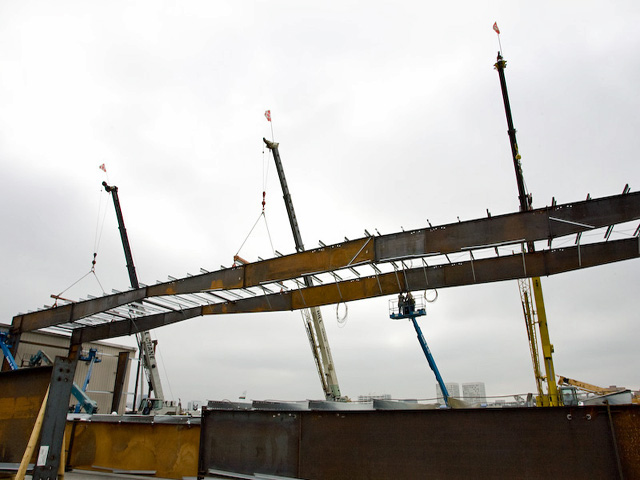
How Turn Up Modern Technology is Benefiting Building
Tilt up construction is rapid confirming itself to be an economical option to commercial structure with steel girders. Turn up technology includes pouring concrete into forms onsite and also doing it flat (as pieces) instead of vertically. We see in this post exactly how this approach to setting up business facilities is valuable.
Tilt up derives its name from this horizontal versus vertical pouring of concrete, complied with by a "tilting up" of the components after healing. The platform for the puts is either the piece flooring of the building itself or a temporary spreading surface that is created individually. All type of structural members can be fashioned by doing this, including walls, columns, and also panels.
The process involves removing the types after the participants have been allowed to treat, and also connecting setting up to them. A crane after that lifts each piece into a vertical placement and also relocate right into its long-term location. Obviously, the casting pad or piece floor needs to be treated extensively first, and preventative measures need to be taken to avoid the put parts from bonding to the pad.
The creating of the panels and columns is basically the like for an upright pour, however with some included advantages. It is possibly much easier to embed insulation and also rebar grids when the kind is in a straight placement, yet what is especially less complex is the development of door and window openings. Fundamentally, the entire structural style is understood all at once.
The material for the forms can be just about anything, from fiber board or dimensional lumber to excellent quality plywood, from aluminum to steel. It is reasonably simple to install studs and also attachment plates within the form to promote indoor building and construction. In fact, any kind of forms can be built into the concrete.
The building and construction of rebar grids emulates what is provided for pouring driveways. Workers construct the grids within the kind as well as use plastic spacers to place them into a fixed area. To prevent the types from bonding with the pad or piece the surfaces are splashed with a chemically responsive bond breaker; this finalizes the needed preparations, and after filling the kinds with concrete, they are allowed to heal.
One of the biggest advantages of the tilt up strategy is that it is implemented onsite at the last building area. Contrast this with prefabrication, which is carried out at some other place, such as at the manufacturer's facility, where there is offered the appropriate tooling and machinery. To set up the upraised architectural aspects, the professional first needs to move them from the remote facility to the building site, which can involve considerable expenses.
However, specialists normally make use of steel as well as other metals to create premade commercial structures rather than concrete, as well as using steel materials offers its very own benefits. There is therefore a trade-off in between the prefab technique and also turn up modern technology that contractors have to evaluate. Prefabrication has a tendency to give more adaptability than turn up, whereas tilt up has the benefit of whatever being constructed onsite.
From a financial point ofview, the change point comes for buildings with 50,000 square feet of area, with prefab steel building getting benefit for frameworks smaller than this amount, and also turn up winning out for ones bigger than this. The ramification is that the dealt with costs associated with making use of tilt up technology are dramatically greater than its scalable expenditures. Indeed, advanced cranes, rigging, and also other devices are needed for lifting as well as positioning wall surfaces that can consider as long as 150 heaps.
Hence, when you have paid to get all that devices to the website, the step-by-step prices of boosting dimension are a lot less substantial. Another, much less apparent benefit originated from the tilt up strategy is that nearly all the wall surfaces are engineered as load-bearing ones. This suggests that indoor wall surfaces often operate as shear walls for raised stiffness. Such results, along with various other facets talked about over, demonstrate how tilt up technology is benefiting building. TI construction
